Building a raised garden bed is a great way to grow vegetables, herbs, and flowers while improving soil drainage, reducing weeds, and keeping your garden organized. DIY raised beds can be made from wood, cinder blocks, metal, or even recycled materials, making them customizable to fit any space and budget.
Here are 10 DIY raised garden bed ideas, plus a step-by-step guide to help you build your own!
🌱 What You’ll Need for a Basic Raised Garden Bed
✔ Building Material – Wood, metal, bricks, or cinder blocks
✔ Soil Mix – A blend of garden soil, compost, and peat moss
✔ Weed Barrier – Landscape fabric or cardboard
✔ Screws & Drill (for wood beds)
✔ Measuring Tape & Saw (if cutting materials)
1. Simple Wooden Raised Garden Bed – Beginner-Friendly
✔ Best for: First-time gardeners
How to Build It:
- Use untreated cedar, pine, or redwood planks.
- Cut four boards to the desired length (e.g., 4’ x 8’).
- Attach with corner brackets or screws.
- Place on a weed barrier and fill with soil.
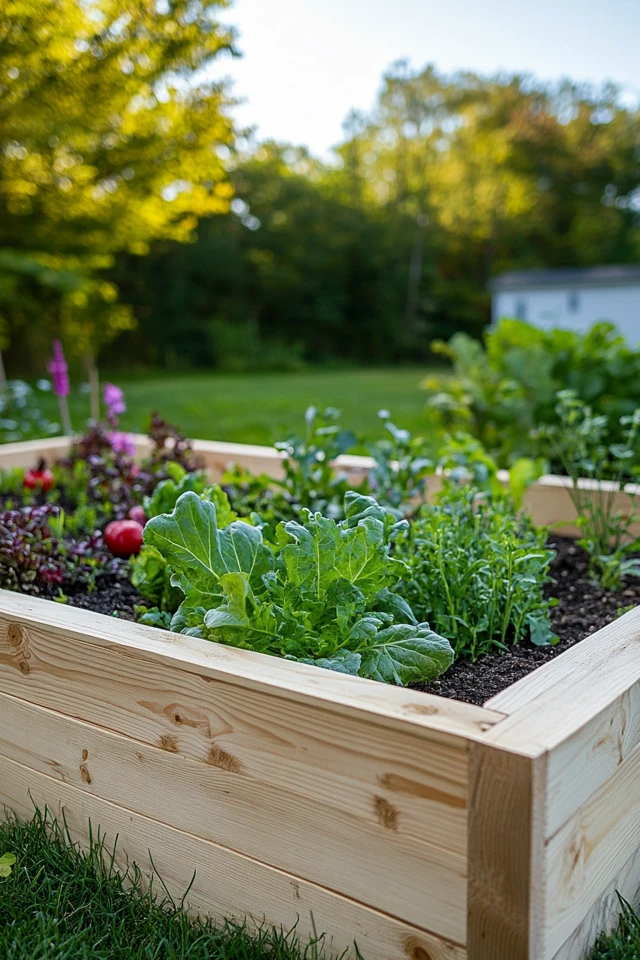
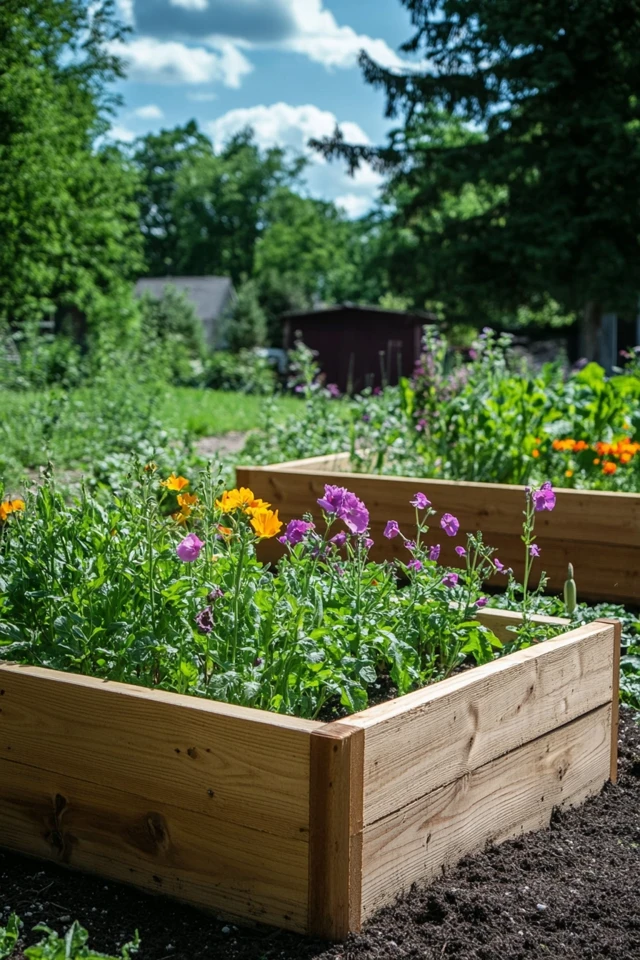
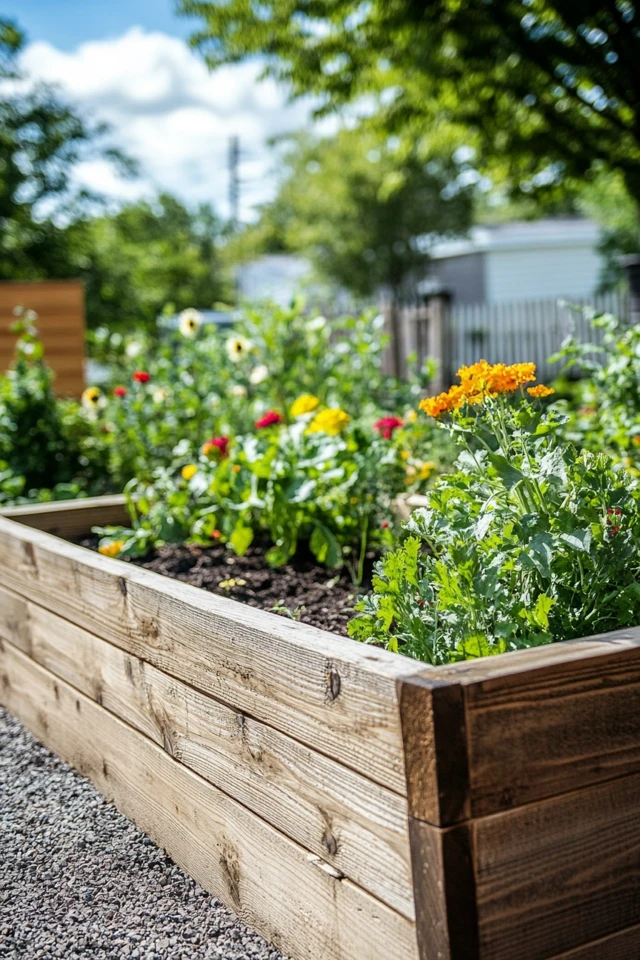
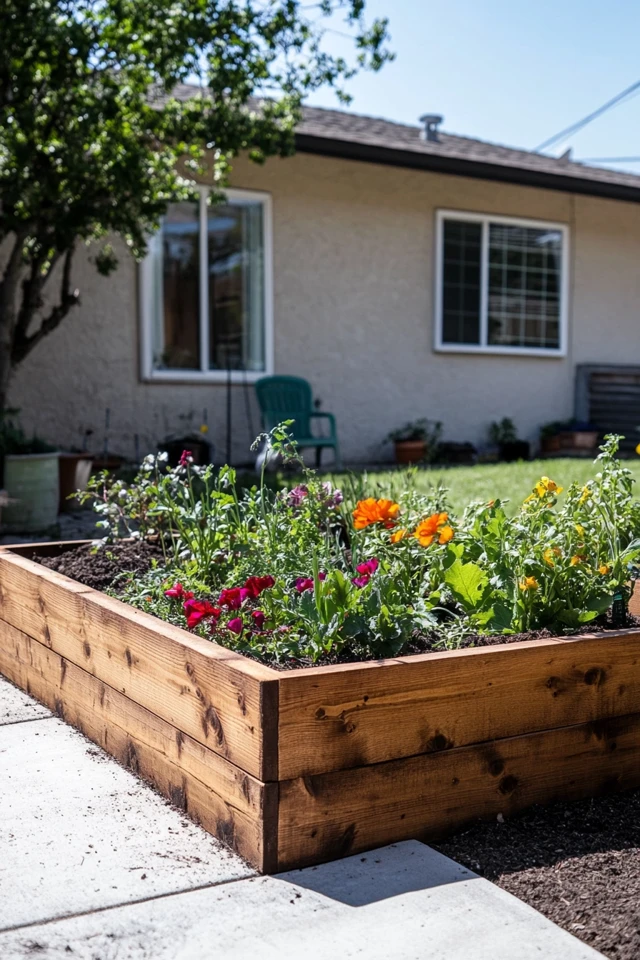
✔ Pros: Cheap, easy, and quick to build.
❌ Cons: Wood may rot over time.
2. Cinder Block Raised Bed – Durable & Easy
✔ Best for: A low-maintenance, long-lasting bed
How to Build It:
- Arrange cinder blocks in a rectangular or square shape.
- Fill blocks with soil or flowers for extra planting space.
- Line the bottom with cardboard or landscape fabric.
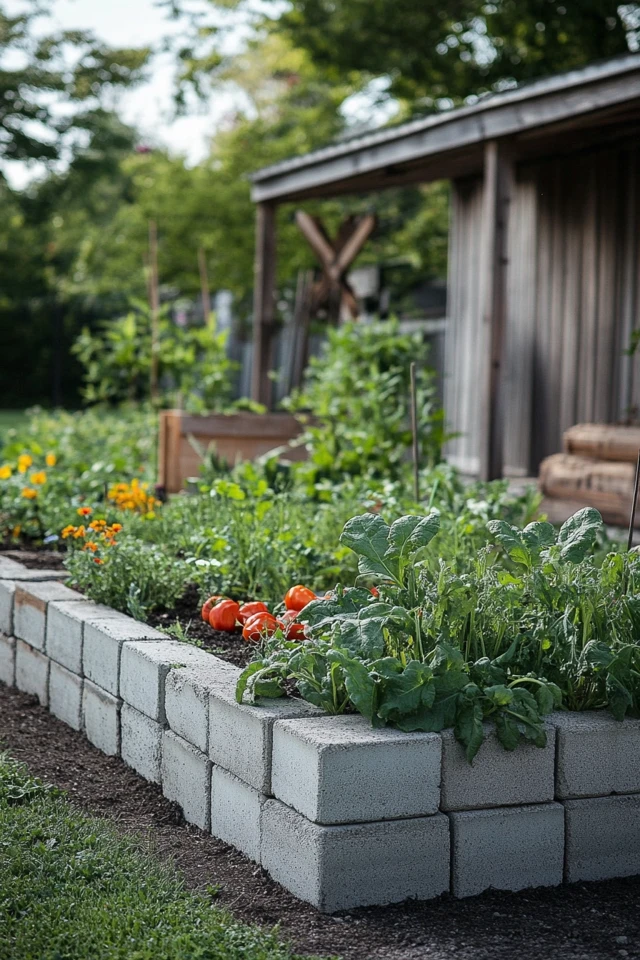
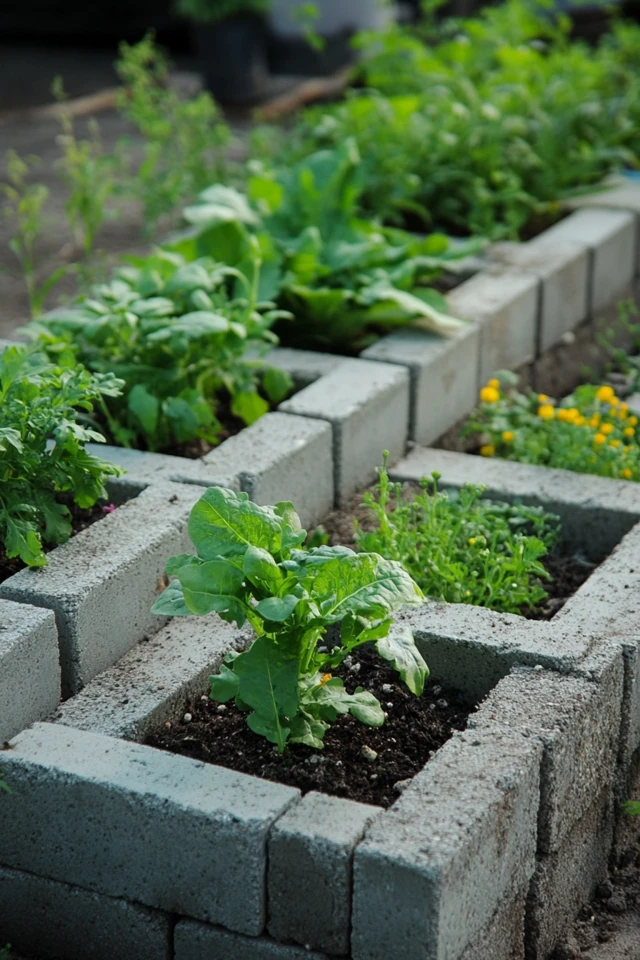
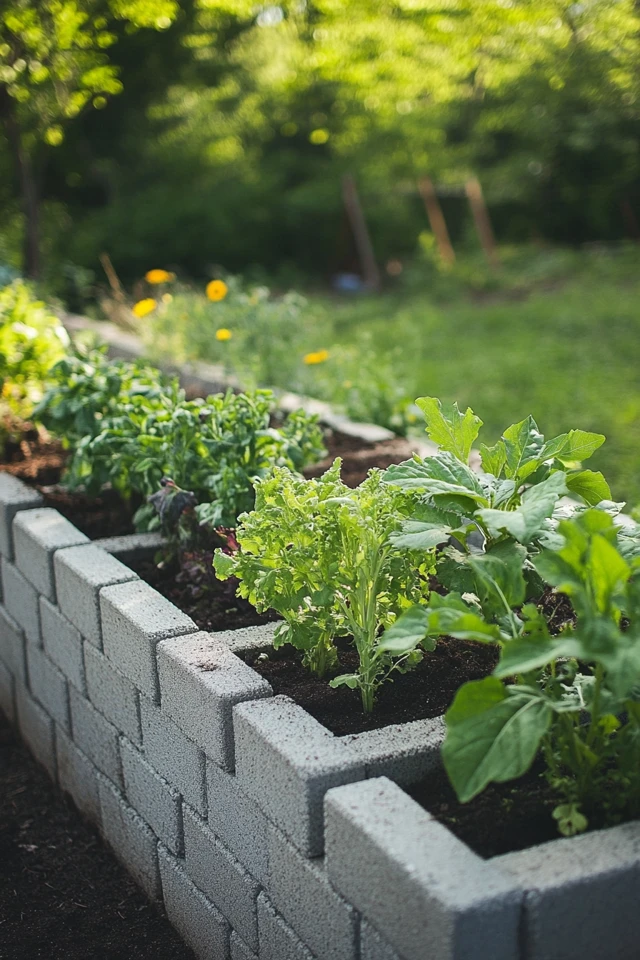
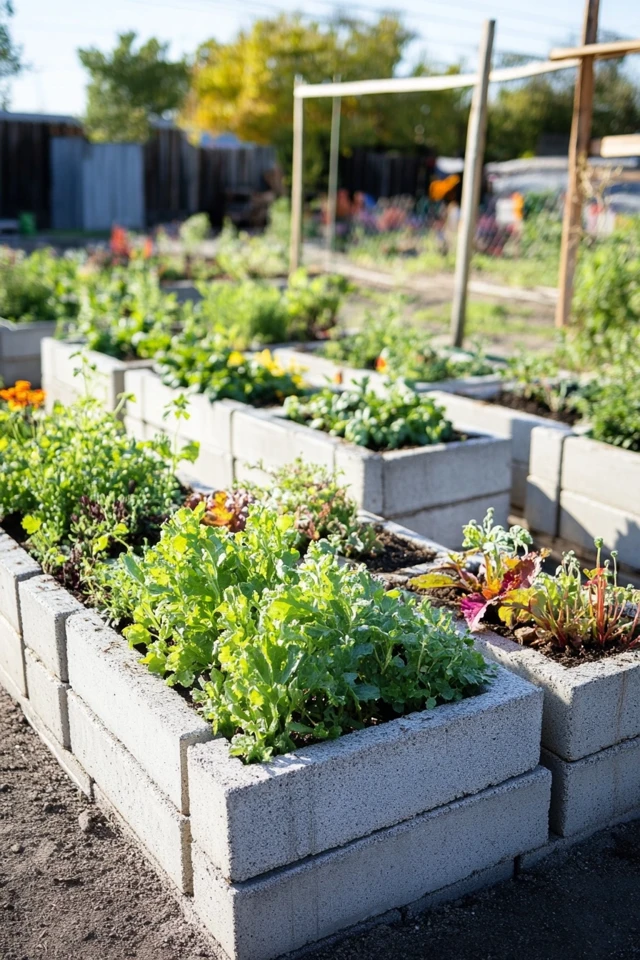
✔ Pros: Sturdy, heat-retentive, and requires no tools.
❌ Cons: Heavy and not as aesthetic as wood.
3. Metal Raised Garden Bed – Modern & Rust-Resistant
✔ Best for: A sleek, long-lasting garden bed
How to Build It:
- Use corrugated metal sheets with a wood or metal frame.
- Attach with bolts or screws.
- Add a liner to prevent overheating the soil.
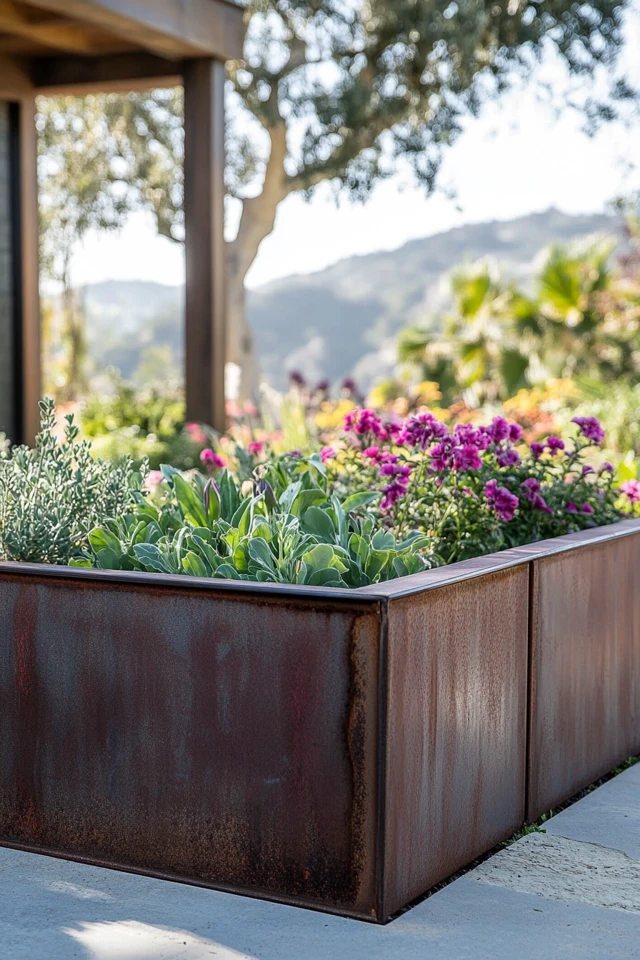
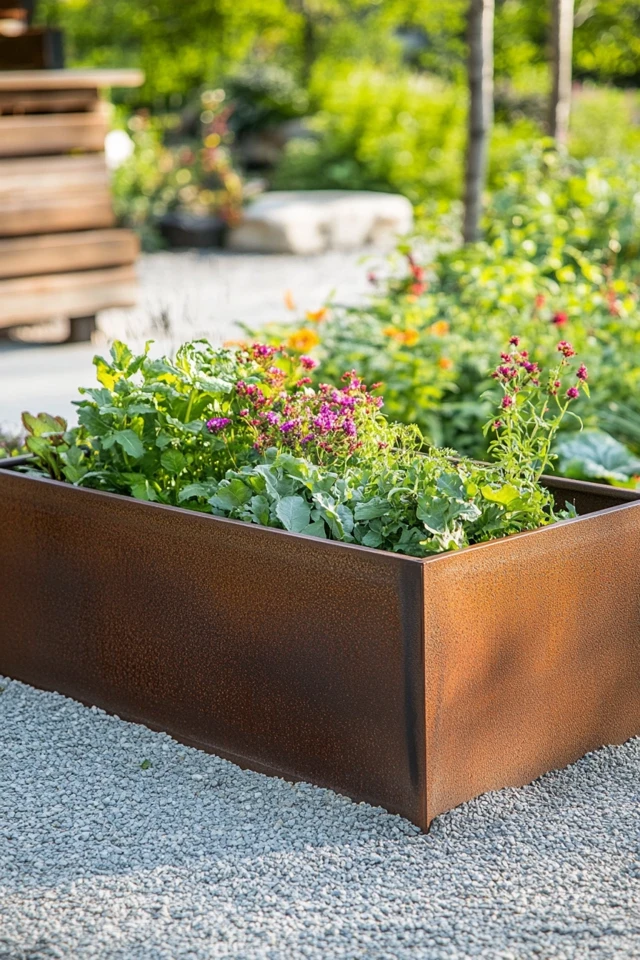
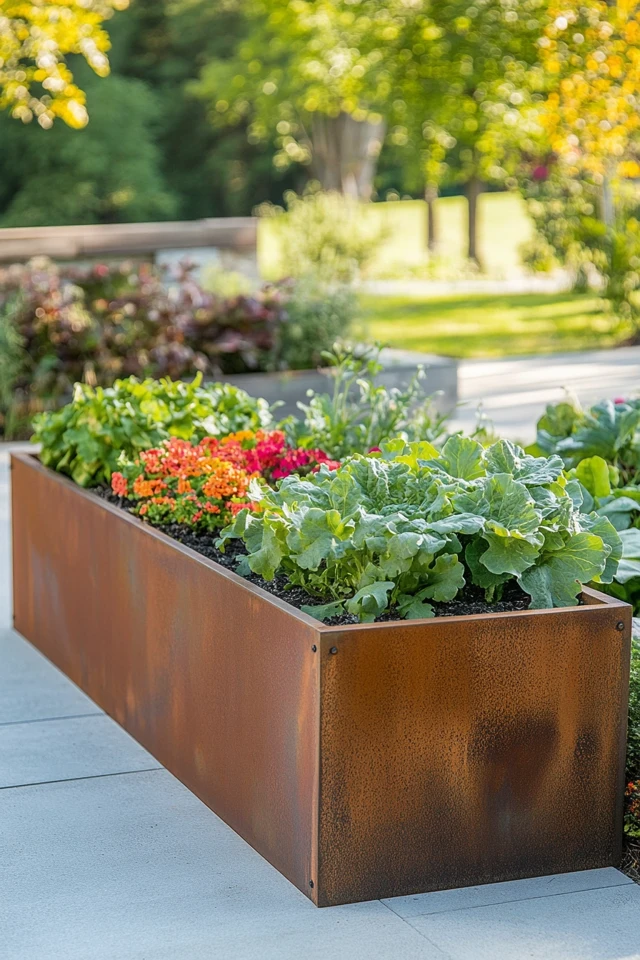
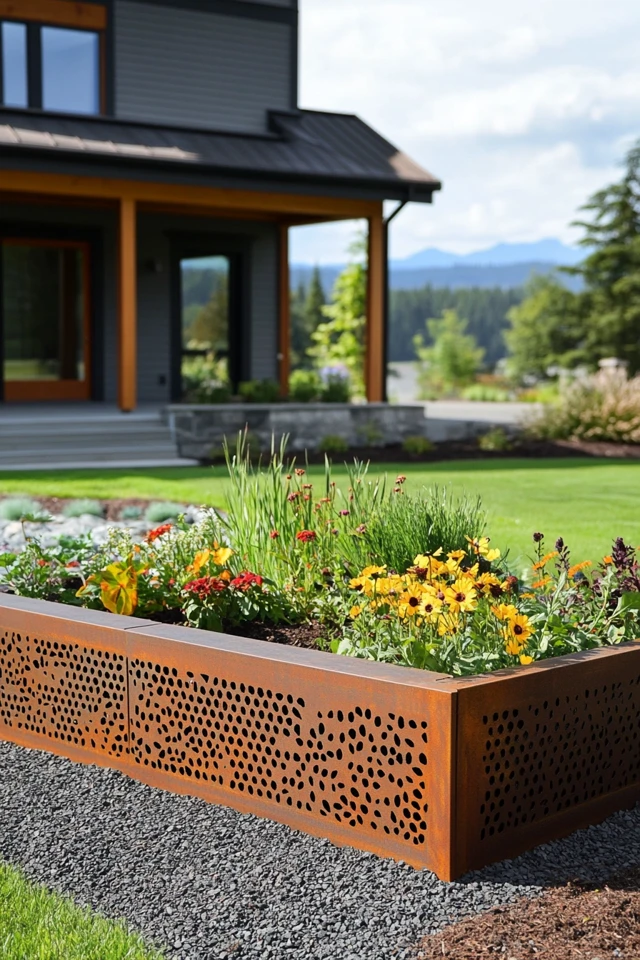
✔ Pros: Rust-resistant, stylish, and long-lasting.
❌ Cons: Can get hot in extreme sun.
4. Pallet Garden Bed – Budget & Eco-Friendly
✔ Best for: Reusing materials on a budget
How to Build It:
- Use recycled wood pallets (untreated).
- Disassemble pallets and nail planks together to form a box.
- Sand and stain for durability.
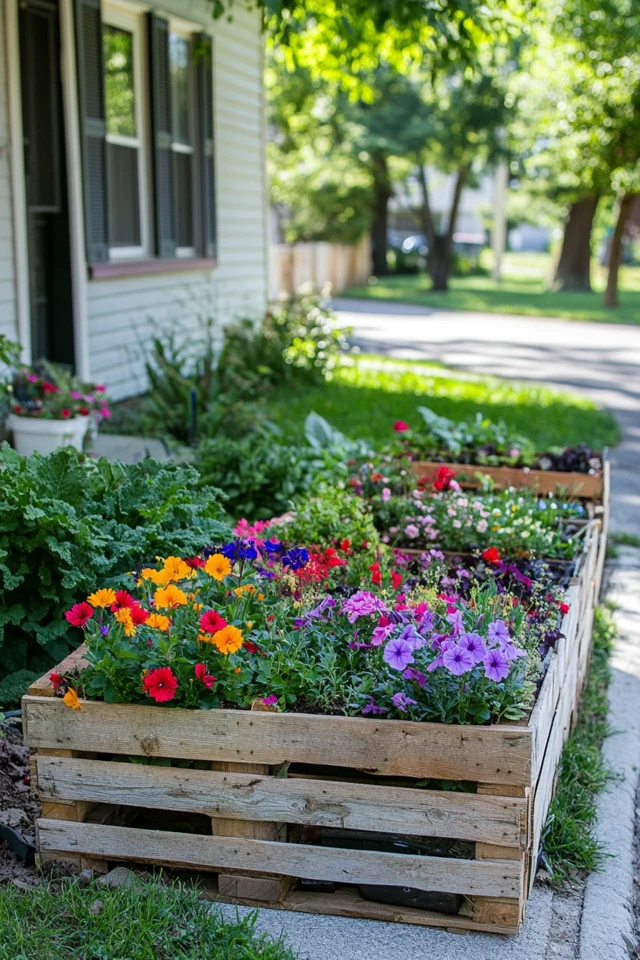
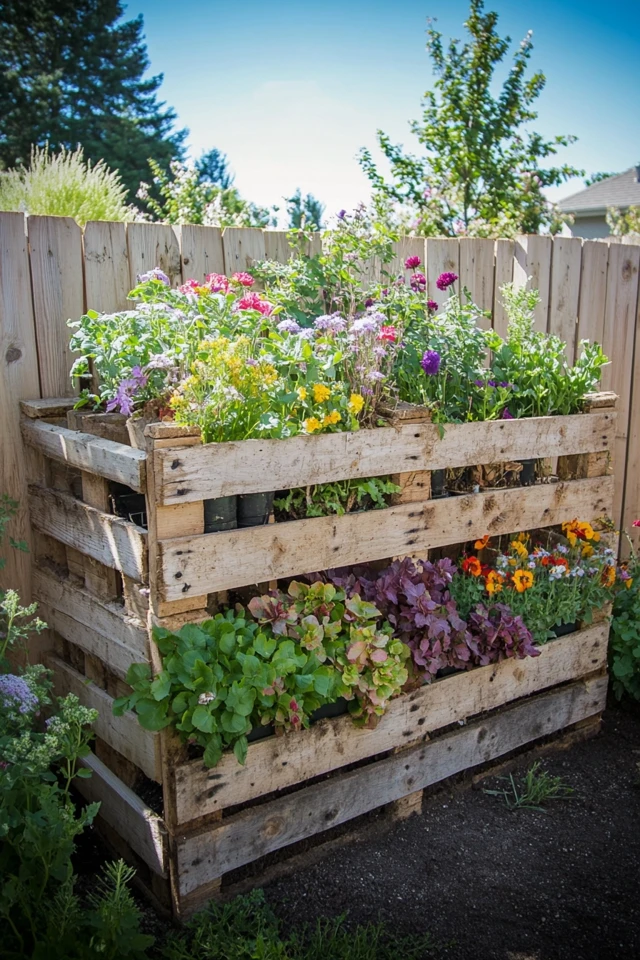
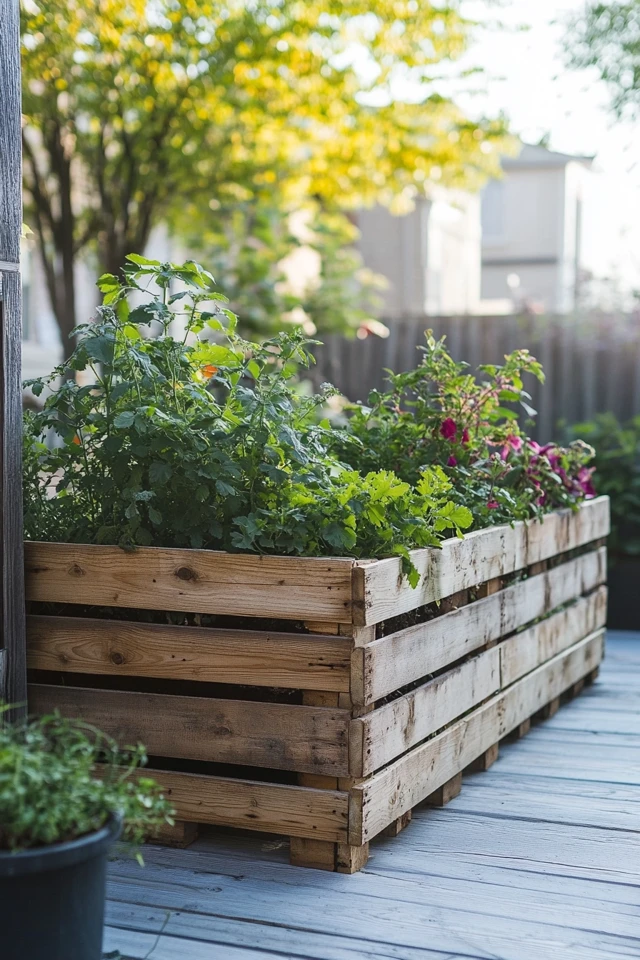
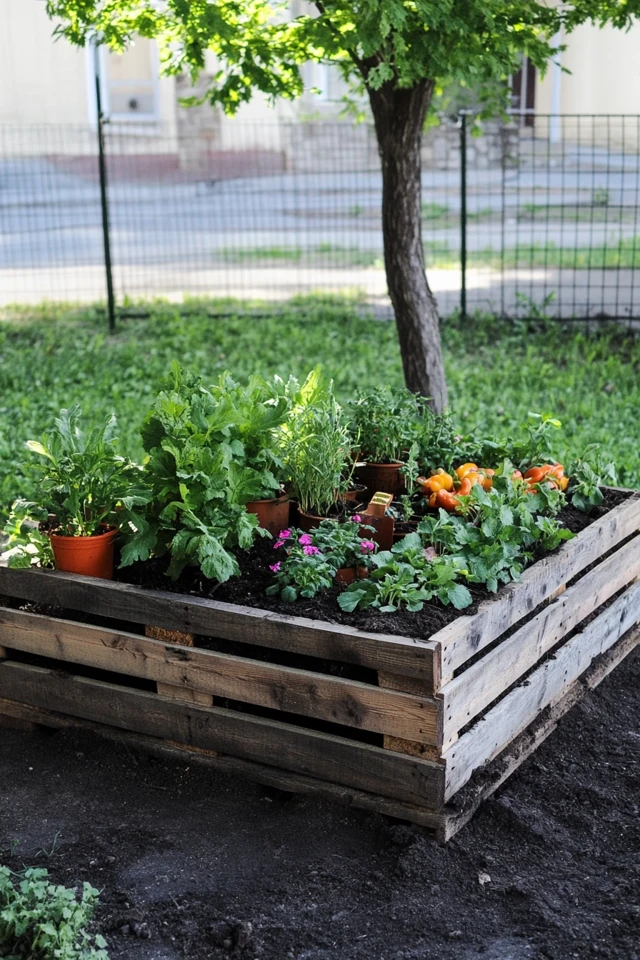
✔ Pros: Free or cheap materials, sustainable.
❌ Cons: Requires extra prep (sanding and sealing).
5. Tiered Raised Bed – Great for Small Spaces
✔ Best for: Vertical gardening and maximizing space
How to Build It:
- Stack three smaller raised beds on top of each other.
- Use different depths for different plants (deepest on the bottom).
- Secure with wood screws or brackets.
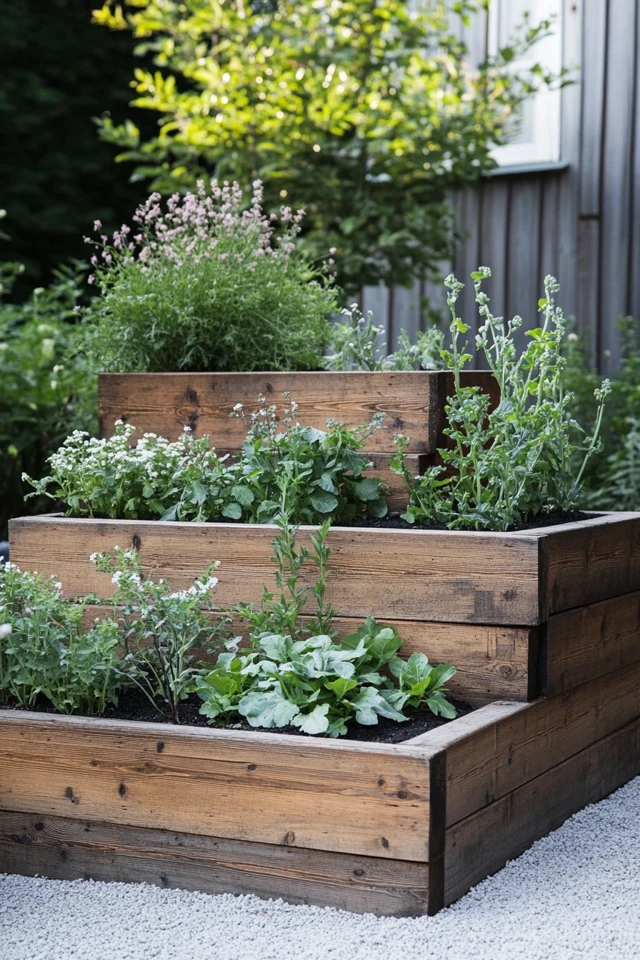
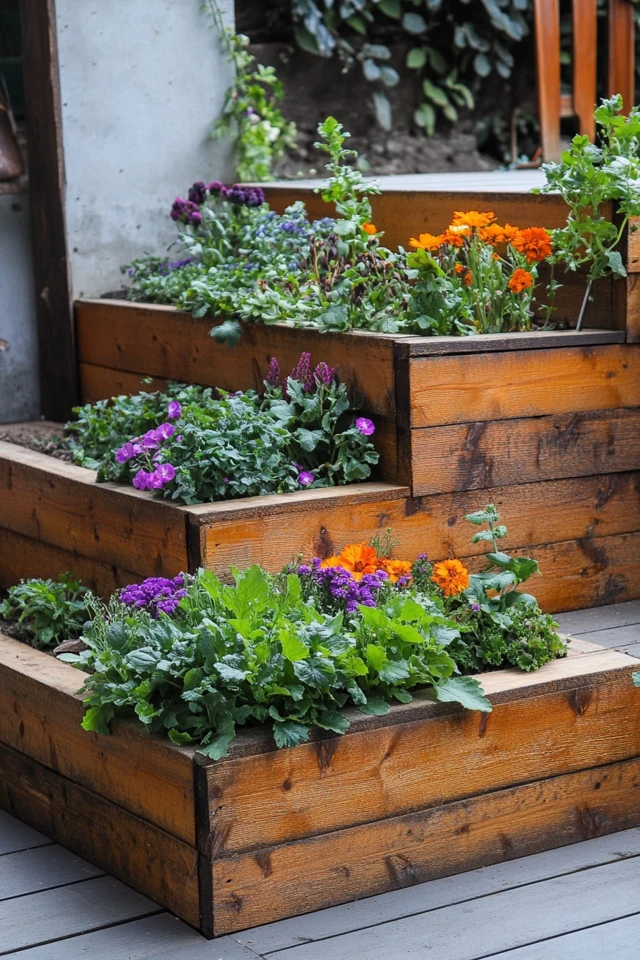
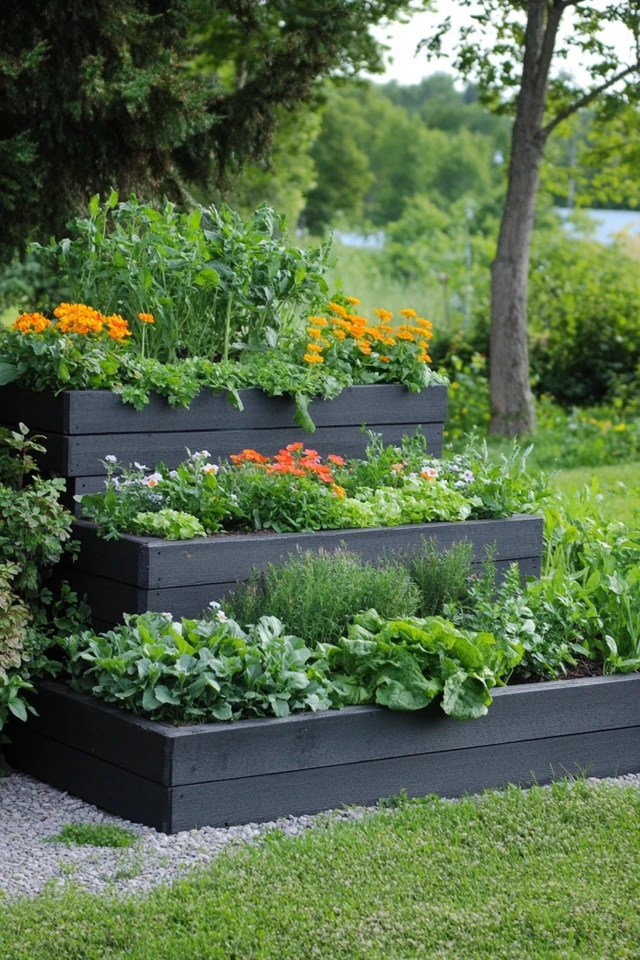
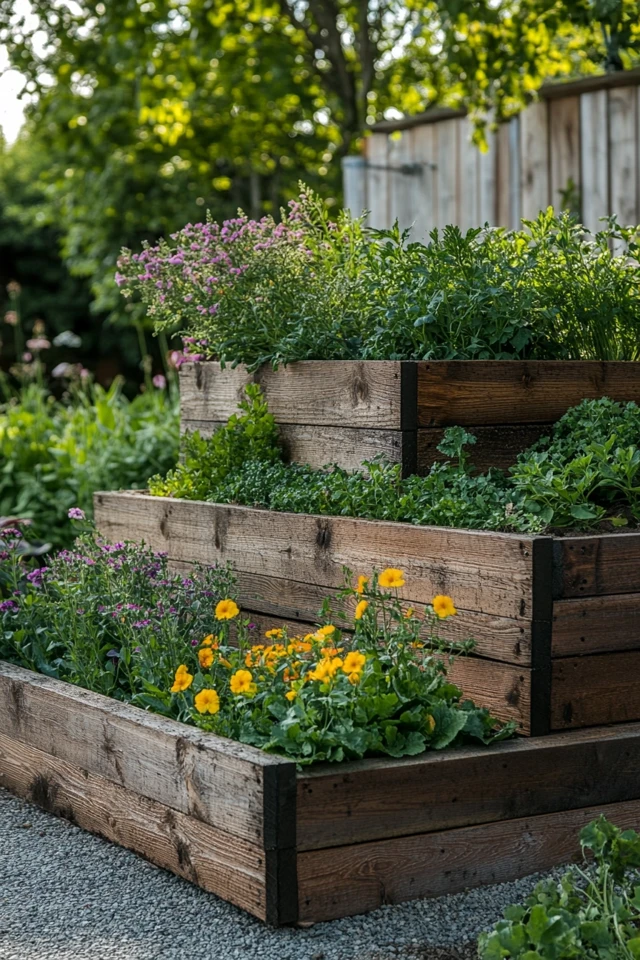
✔ Pros: Space-saving and visually appealing.
❌ Cons: Requires more materials and effort.
6. Keyhole Raised Bed – Water-Saving & Functional
✔ Best for: Water-efficient gardening
How to Build It:
- Create a circular or U-shaped raised bed.
- Leave a “keyhole” space in the center for composting.
- Surround with wood, bricks, or stones.
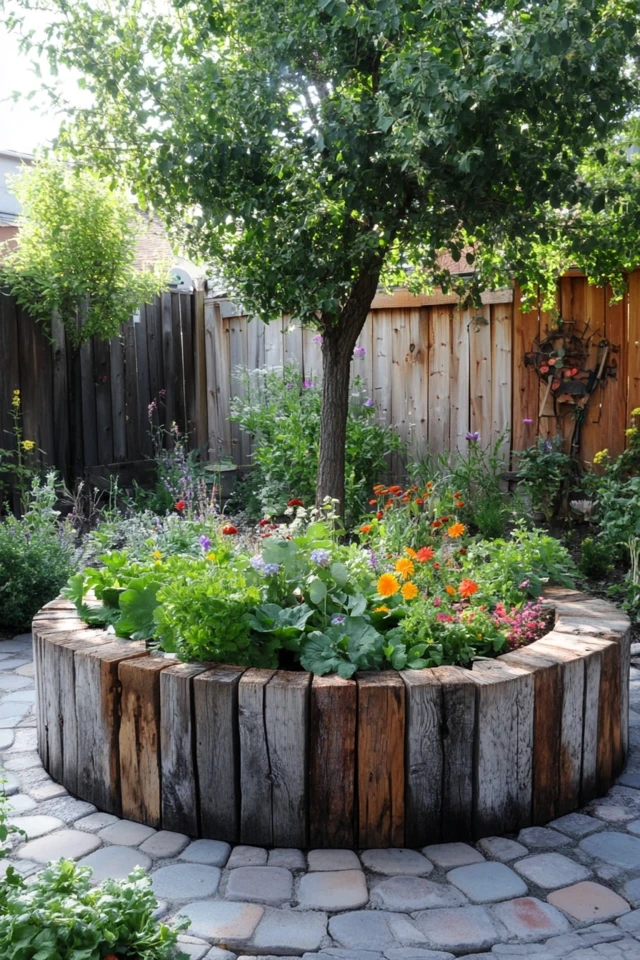
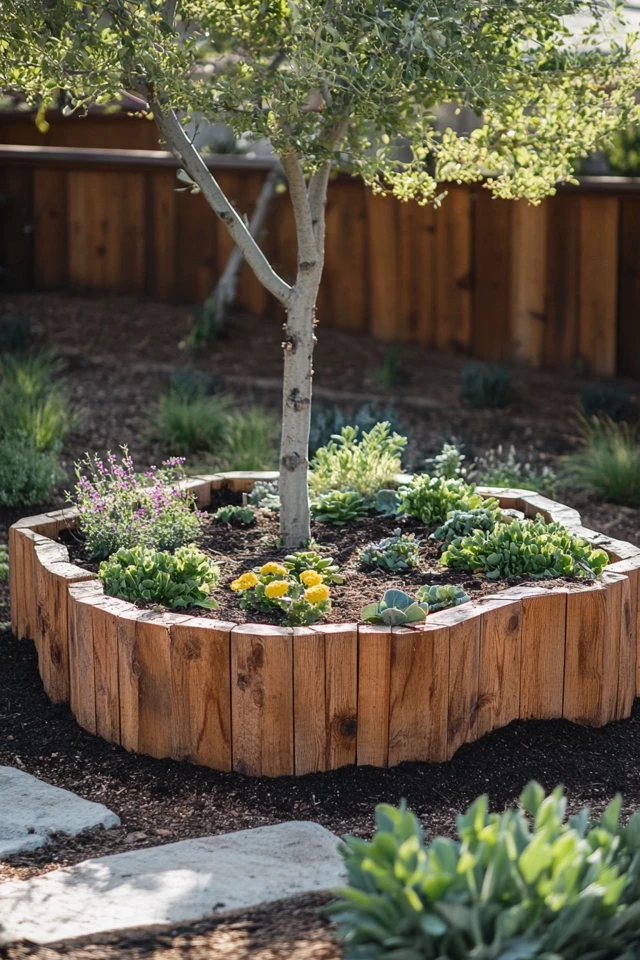
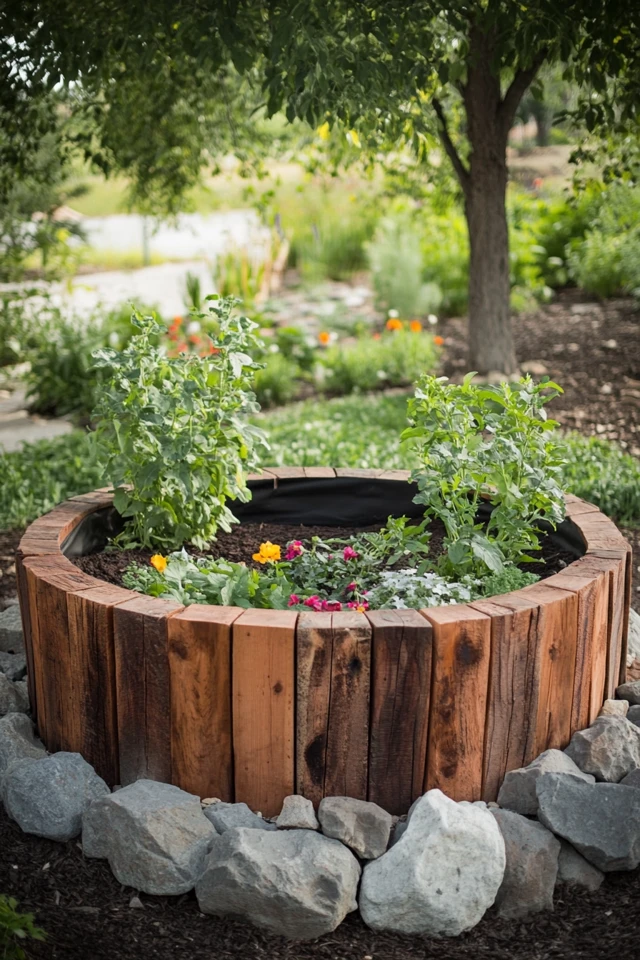
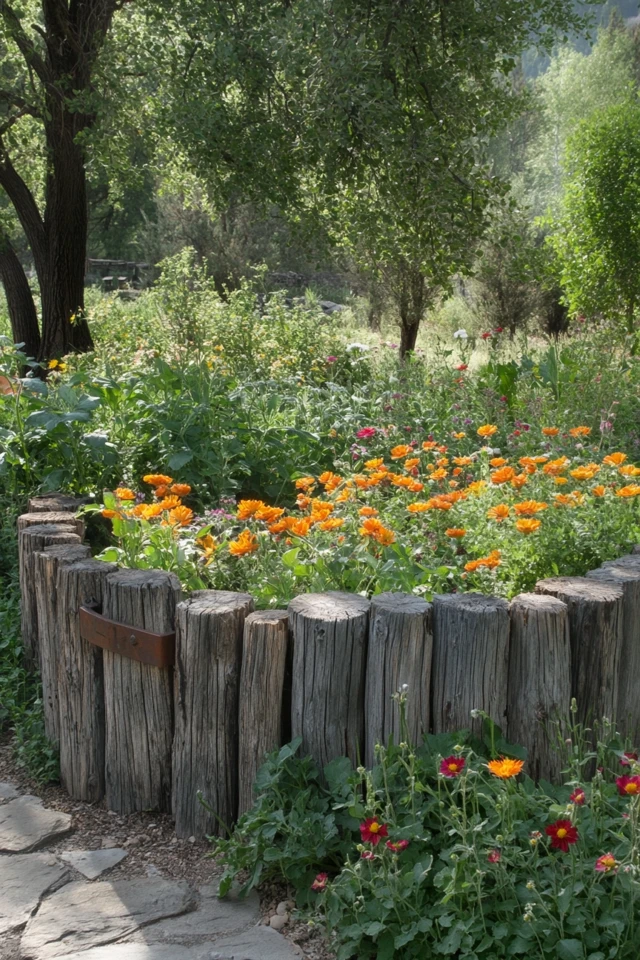
✔ Pros: Self-sustaining, great for permaculture gardens.
❌ Cons: Takes up more space.
7. Straw Bale Raised Bed – Quick & Compostable
✔ Best for: Temporary, low-cost gardens
How to Build It:
- Arrange straw bales in a square or rectangle.
- Water and fertilize the bales for a few weeks to condition them.
- Plant directly into the straw or a thin soil layer.
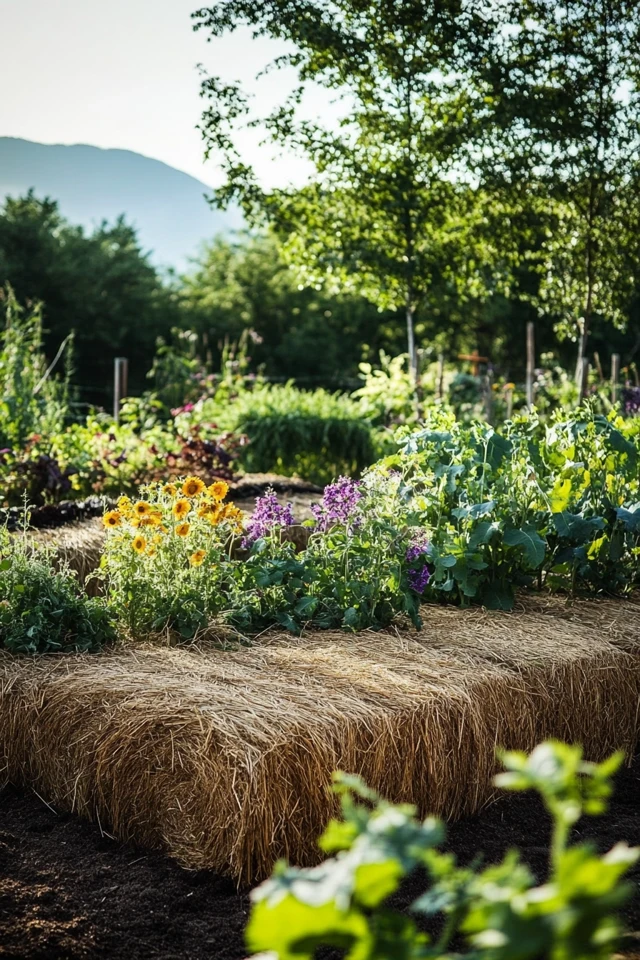
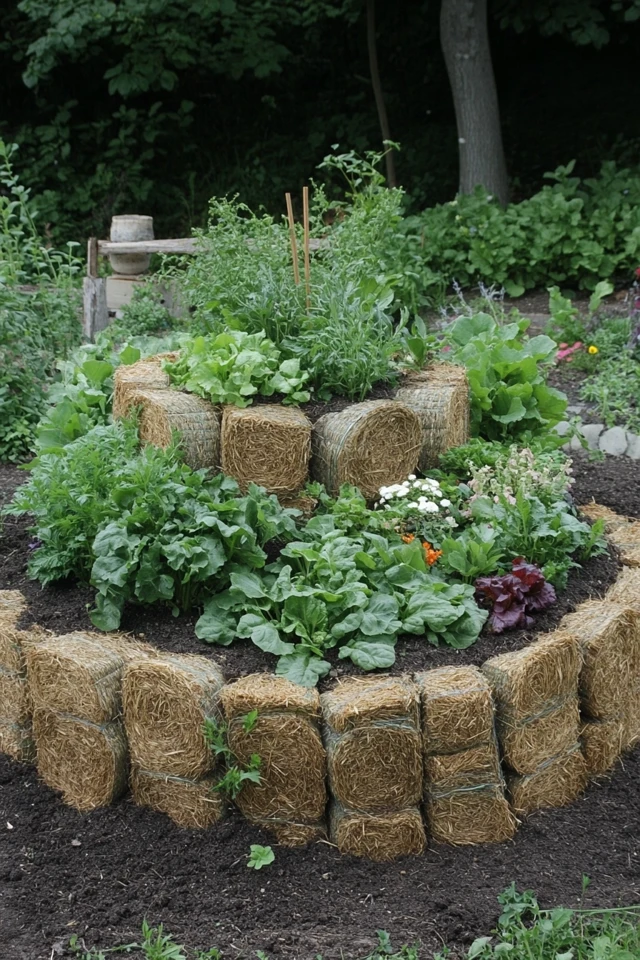
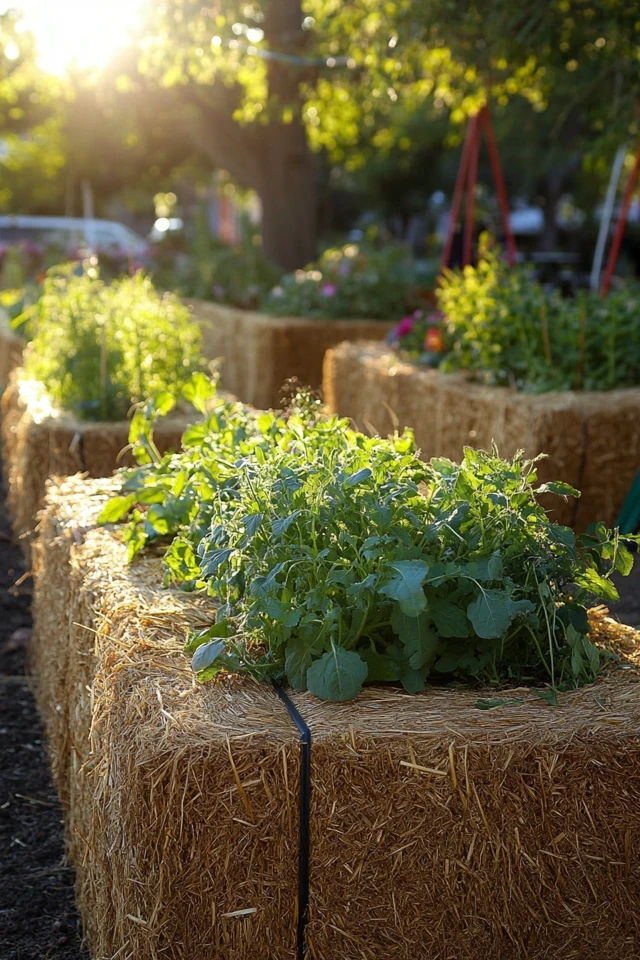
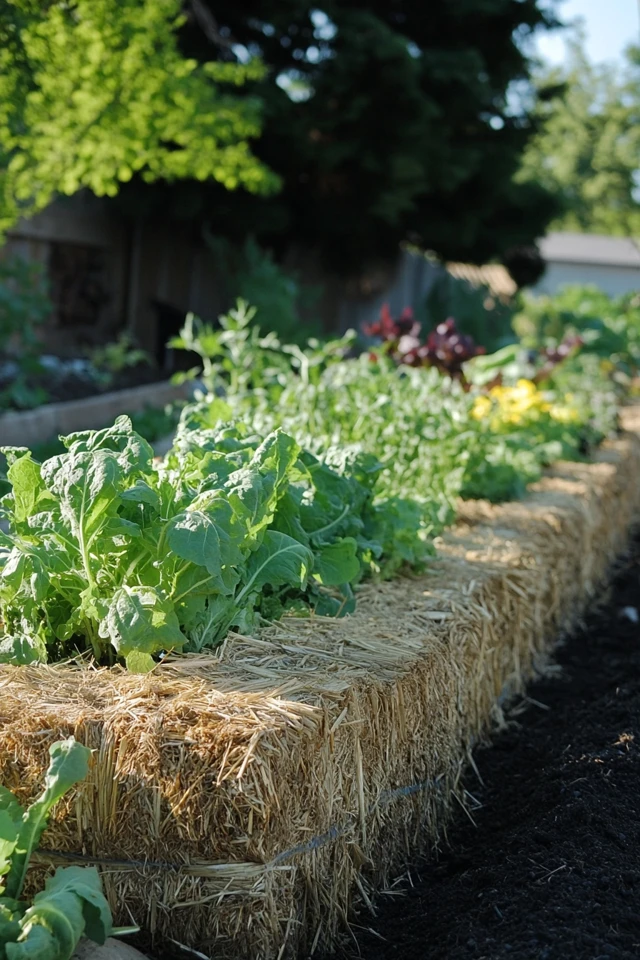
✔ Pros: Inexpensive and composts over time.
❌ Cons: Only lasts one season.
8. Log Raised Garden Bed – Rustic & Natural
✔ Best for: A rustic, nature-inspired garden
How to Build It:
- Use fallen logs or cut wood pieces.
- Arrange in a rectangle and secure with stakes.
- Fill with soil and compost.
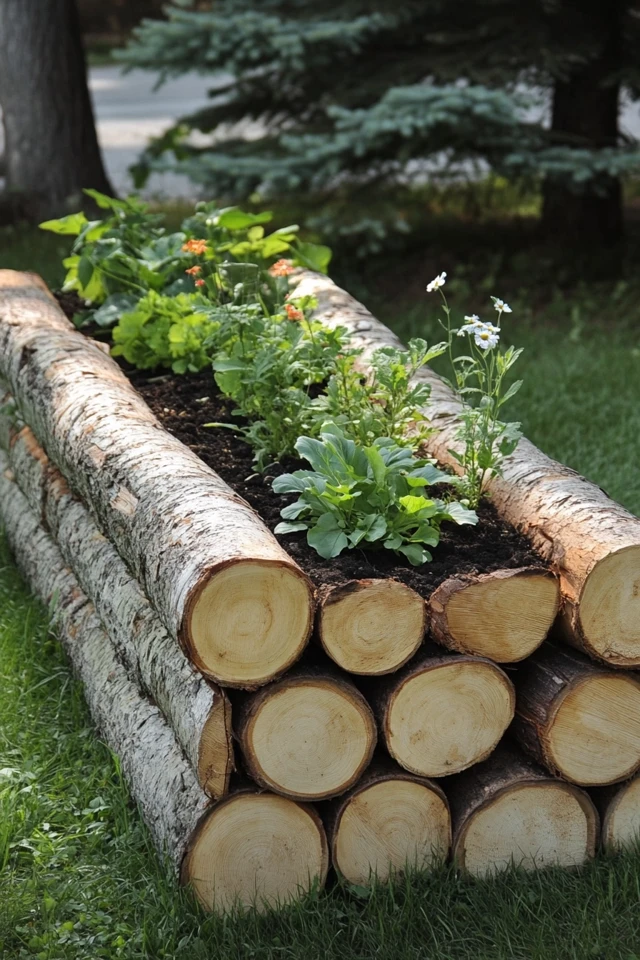
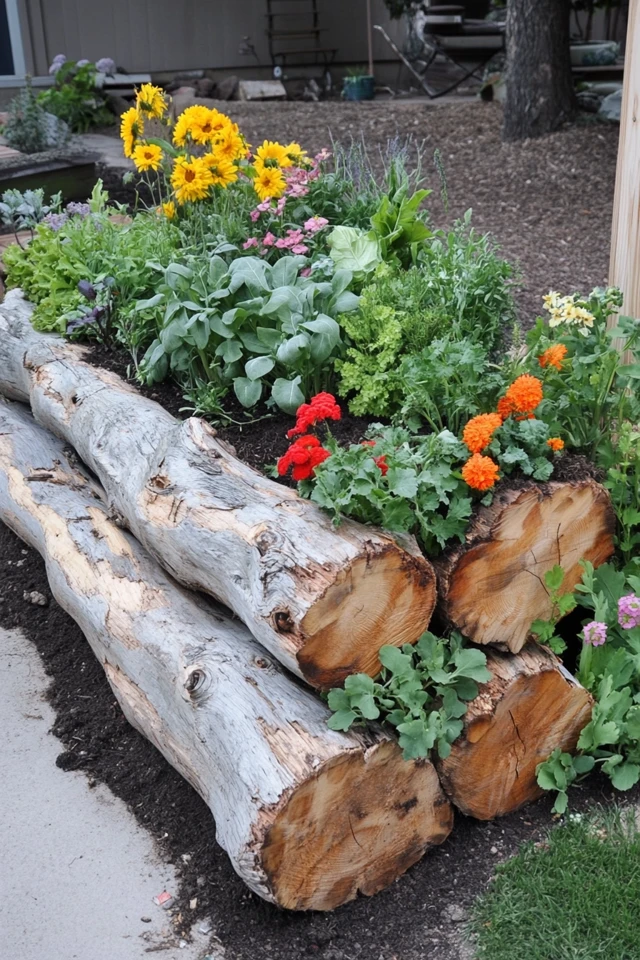
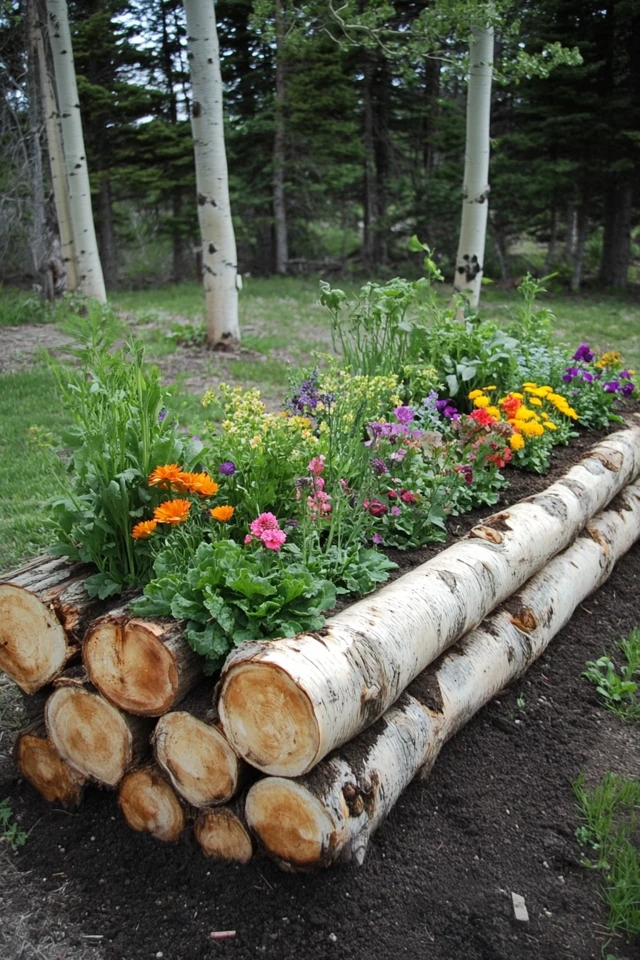
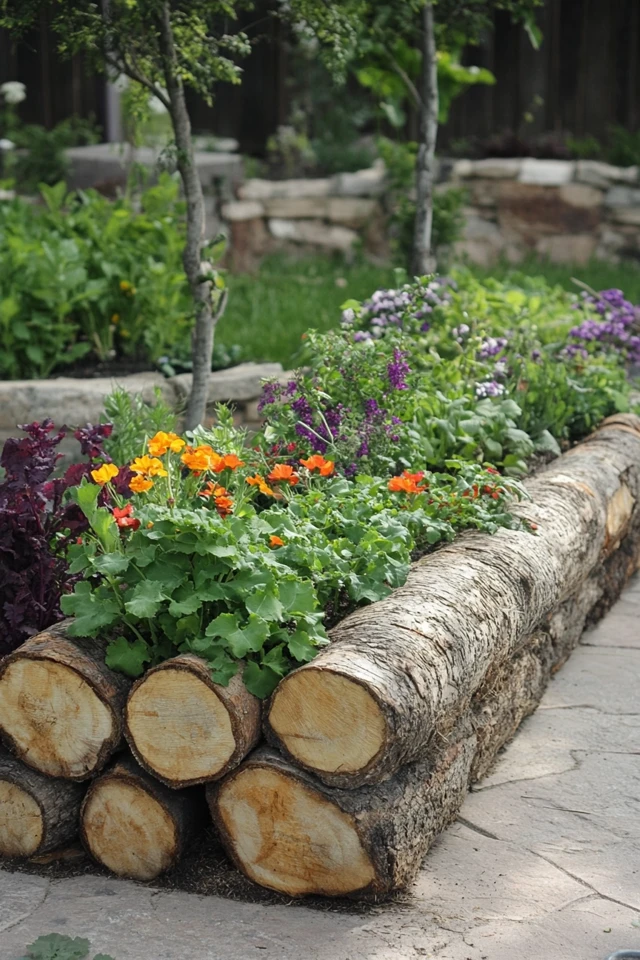
✔ Pros: Free if you have logs; blends into nature.
❌ Cons: Logs may rot over time.
9. Brick Raised Bed – Long-Lasting & Stylish
✔ Best for: A permanent garden structure
How to Build It:
- Stack bricks or concrete pavers in a rectangular shape.
- Use mortar or stack them dry.
- Fill with soil and plants.
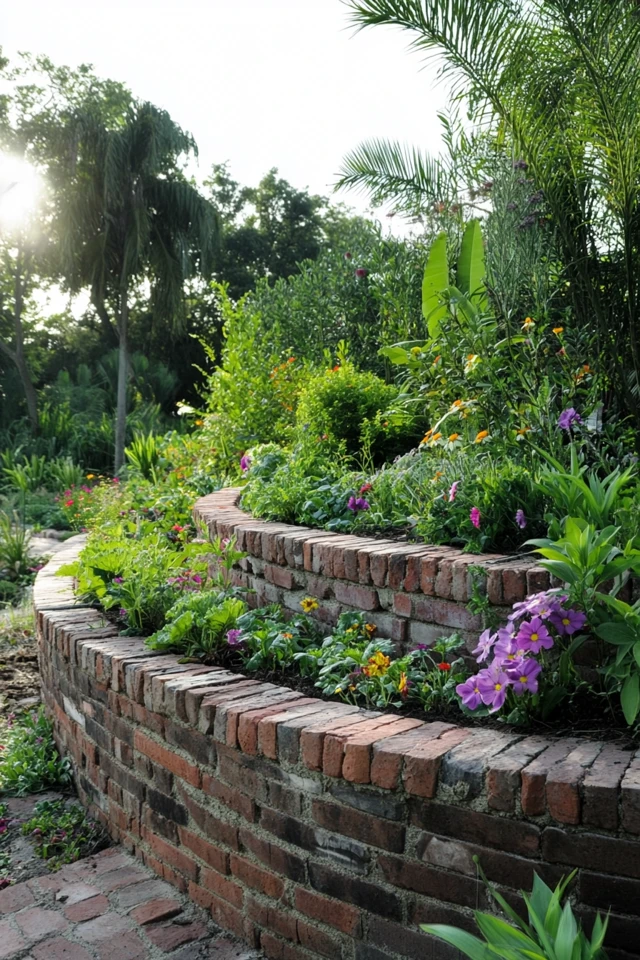
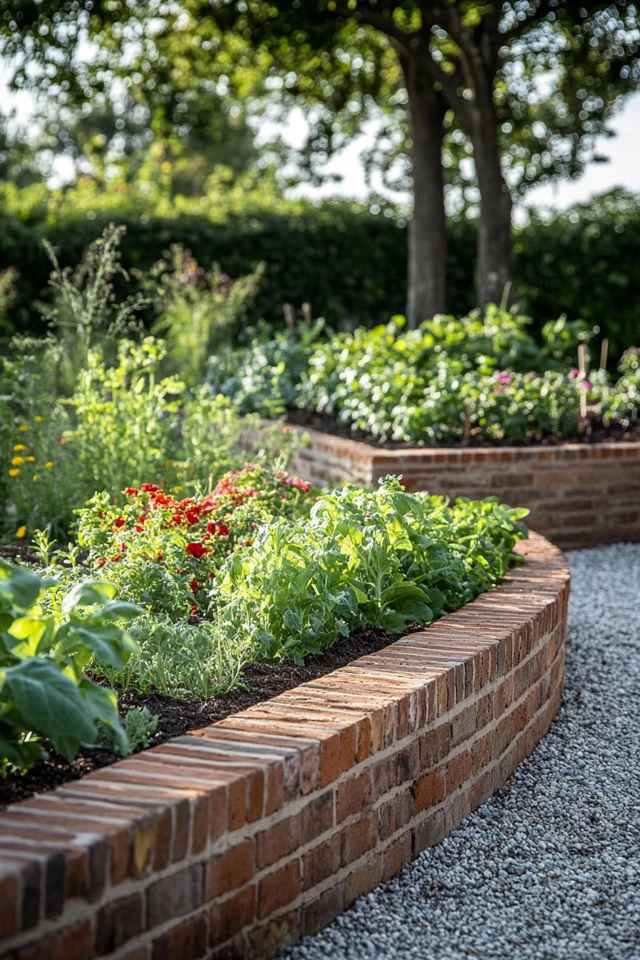
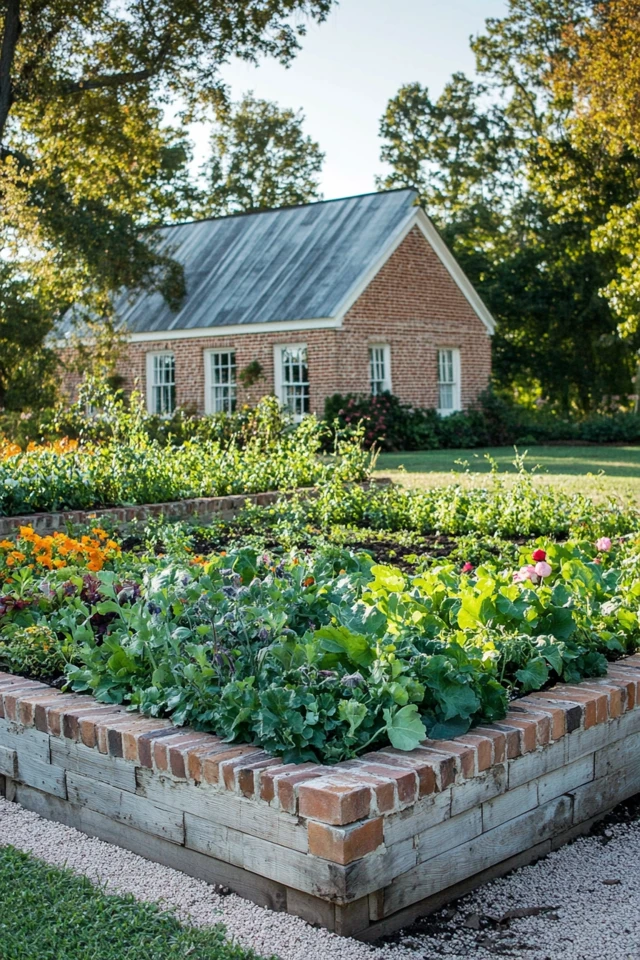
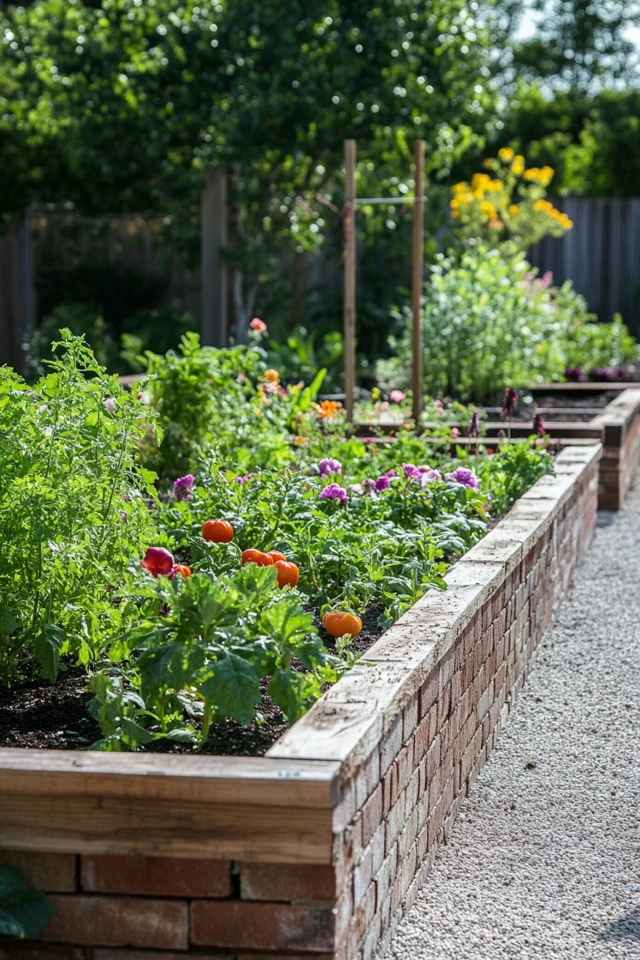
✔ Pros: Extremely durable and attractive.
❌ Cons: Heavy and time-consuming to build.
10. Self-Watering Raised Bed – Low Maintenance
✔ Best for: Reducing watering needs
How to Build It:
- Use a plastic storage bin or wooden frame.
- Add a water reservoir underneath with PVC pipes.
- Fill with soil and plant directly on top.
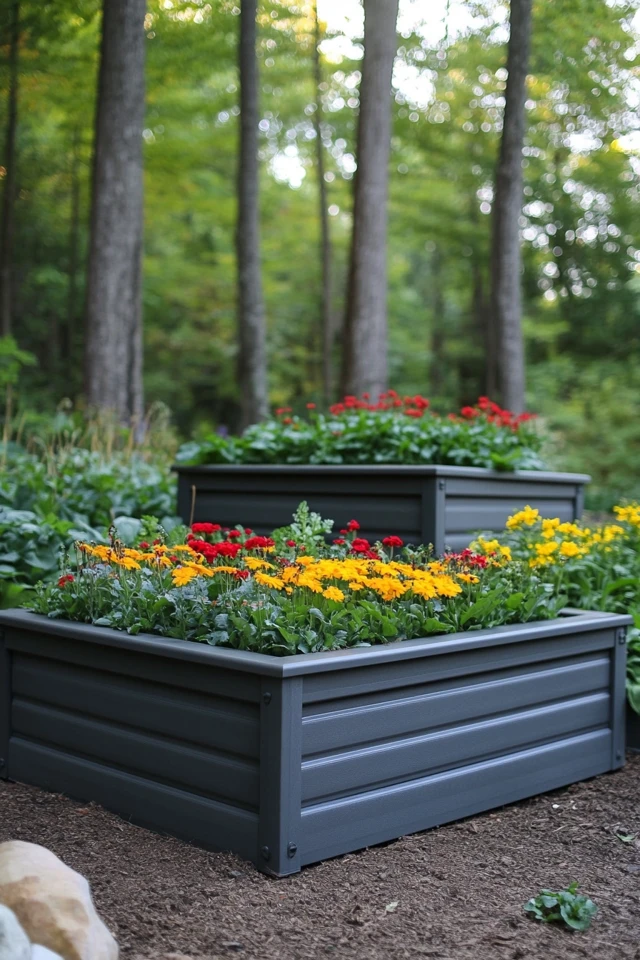
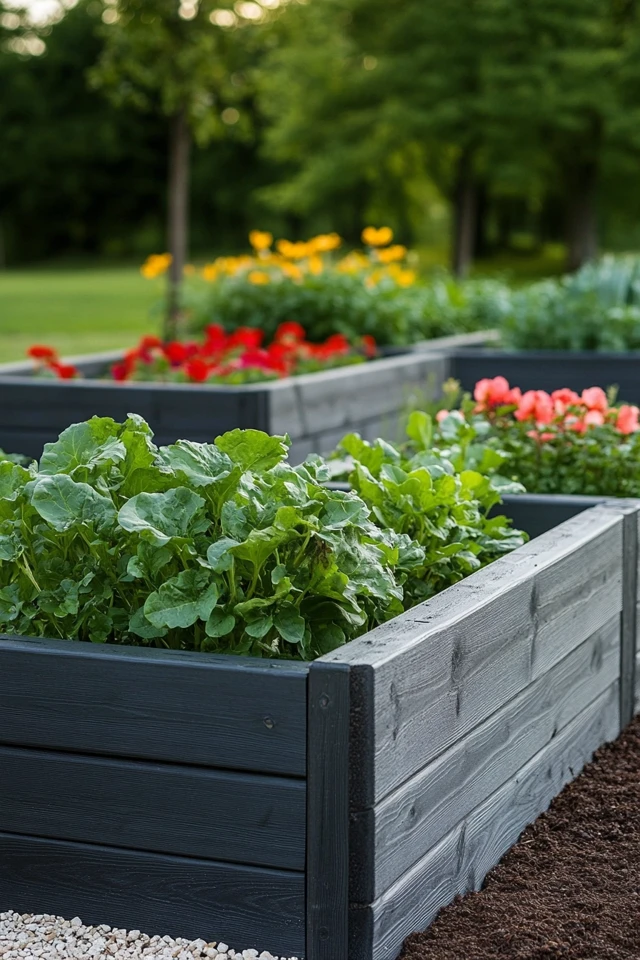
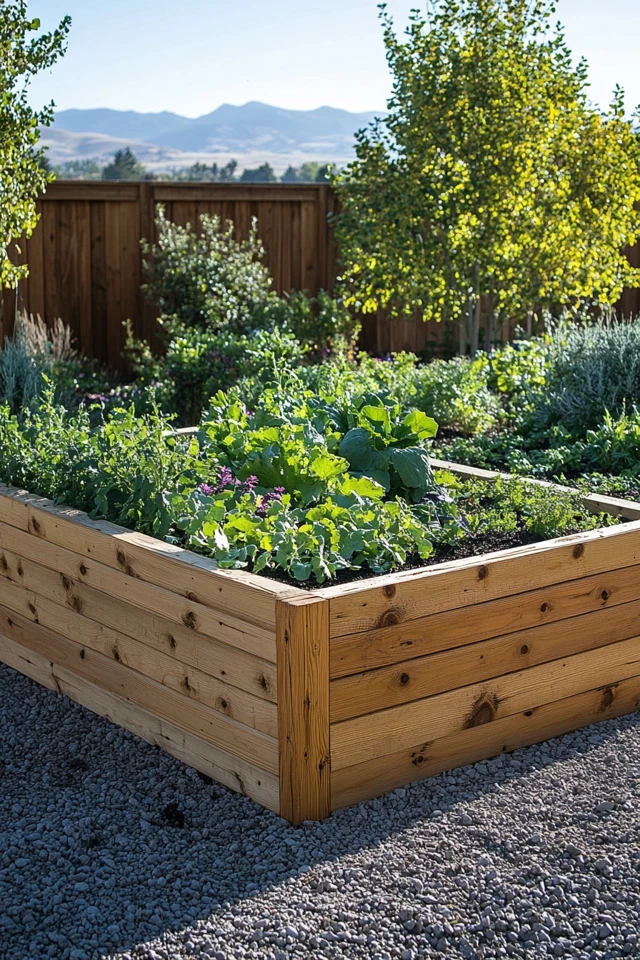
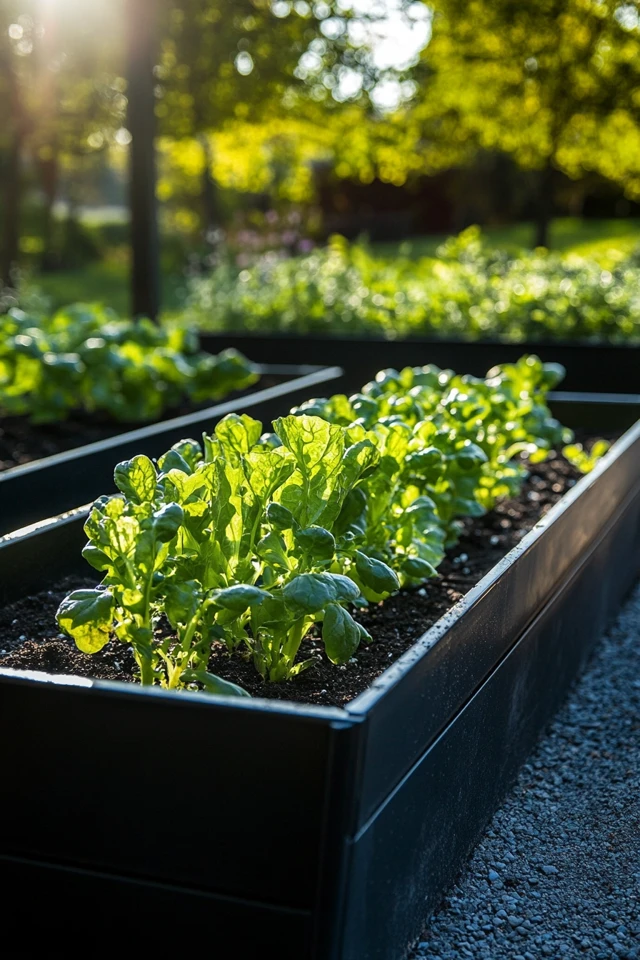
✔ Pros: Saves water and time.
❌ Cons: Requires extra materials for water system.
🌱 How to Fill a Raised Garden Bed (Layering Method)
1️⃣ Bottom Layer: Cardboard or landscape fabric (blocks weeds).
2️⃣ Middle Layer: Twigs, leaves, or straw (improves drainage).
3️⃣ Top Layer: A mix of garden soil, compost, and peat moss for nutrients.
💡 Tip: Avoid using treated wood or chemical-laden materials that could leach into the soil.
🌱 Final Tips for DIY Raised Garden Beds
✔ Choose the right size – 4×8 feet is ideal for easy access.
✔ Pick a sunny location – Most vegetables need 6-8 hours of sun.
✔ Use quality soil – A mix of compost, topsoil, and organic matter.
✔ Consider drainage – Elevate the bed or add gravel under the soil.
✔ Add a protective barrier – Use chicken wire underneath to prevent pests.
With these DIY raised garden bed ideas, you can build a custom garden space that suits your needs—whether it’s budget-friendly, stylish, or eco-conscious!
Which design will you try? Let me know! 🌿✨